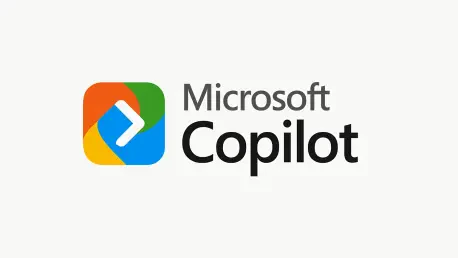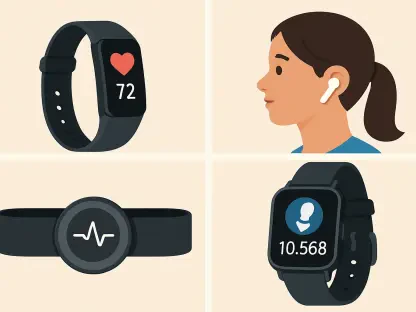In a groundbreaking stride toward reimagining artificial intelligence, Microsoft is transforming its AI tool, Copilot, from a basic productivity assistant into a deeply personal and emotionally intelligent digital companion. Under the visionary leadership of Mustafa Suleyman, CEO of Microsoft AI, the company is charting a path to create an AI that feels less like a cold utility and more like a trusted, lifelong friend. This ambitious endeavor seeks to weave Copilot seamlessly into both personal and professional spheres, offering a level of connection and intimacy that pushes the boundaries of what AI can achieve. As technology continues to evolve, this shift signals a new era where emotional resonance and user delight take center stage, challenging the traditional notions of AI as merely a functional tool. The implications of such a transformation are vast, promising to redefine how humans interact with and rely on digital entities in their daily lives, while also raising critical questions about trust, privacy, and the role of corporate influence in shaping these intimate relationships.
Shaping a New Kind of AI Relationship
Building Emotional Intelligence
Microsoft’s vision for Copilot transcends the typical boundaries of AI functionality, aiming to position it as a life coach, productivity partner, and even a personal mentor. Unlike conventional assistants that focus solely on task completion, Copilot is being designed to retain memories of past interactions and offer tailored guidance that feels uniquely personal. This approach draws inspiration from Suleyman’s previous work with Inflection AI’s chatbot Pi, which emphasized empathy over raw data processing. By prioritizing heartfelt conversations and emotional support, Copilot could become a constant companion through life’s challenges and triumphs. The goal is to create interactions that resonate on a human level, making users feel understood rather than merely assisted. This shift toward emotional intelligence in AI reflects a growing recognition that technology must connect with users on a deeper, more meaningful level to truly integrate into everyday life.
The development of emotional intelligence in Copilot also involves enhancing its ability to engage in voice chats with expressive tones and responses. This feature aims to simulate a more natural dialogue, where the AI can pick up on subtle cues and respond with appropriate empathy or encouragement. Imagine an AI that not only helps with scheduling or data analysis but also offers a comforting word during a stressful moment. Such capabilities could make Copilot a go-to source for emotional support, blurring the lines between technology and human interaction. However, this raises the stakes for ensuring that such empathy remains genuine and user-focused, rather than becoming a tool for corporate agendas. Microsoft’s challenge lies in balancing these innovative features with the need to maintain user trust, ensuring that Copilot’s emotional depth serves as a true asset rather than a potential point of exploitation.
Introducing a Visual and Interactive Presence
One of the most captivating elements of Copilot’s evolution is its experimental visual representation, currently depicted as a floating, cloud-like form with animated facial expressions during voice interactions. This design choice seeks to enrich communication by adding a non-verbal layer, making exchanges feel more engaging and relatable. While still in early stages, this visual feature hints at a future where users might personalize Copilot’s appearance to reflect their preferences, fostering a sense of ownership and individuality. Such customization could transform the AI into a truly unique companion, distinct for each user. This move toward visual interaction marks a significant departure from the text-based or voice-only interfaces of most AI tools, aiming to create a more immersive and human-like experience that could redefine user expectations.
Beyond its visual aspect, Copilot is also being conceptualized with a dedicated digital “room” and the ability to evolve over time, much like a virtual entity with its own history and space. This innovative idea introduces a sense of continuity and familiarity, as if the AI grows alongside its user, accumulating a digital record of shared experiences. The notion of Copilot aging with time sets it apart from the static, timeless nature of current chatbots, offering a dynamic relationship that mirrors human connections. This approach could make interactions feel more organic, as users return to a familiar presence that remembers past moments and adapts to new contexts. Yet, the success of this concept will depend on how seamlessly Microsoft can integrate these elements without overwhelming users or compromising the simplicity that many value in AI tools.
Navigating the Roadblocks and Ethical Terrain
Addressing Branding and Privacy Issues
A significant obstacle in Copilot’s journey lies in the branding strategy, which currently creates confusion between its consumer and enterprise versions. Both share the same name and icon, despite serving vastly different purposes—one as a personal companion and the other as a productivity tool within Microsoft 365. This overlap risks muddling user expectations and raises serious privacy concerns about whether personal conversations could inadvertently mix with professional data. A distinct name for the consumer-focused version might have provided clearer boundaries, helping to build trust and avoid ambiguity. Microsoft’s challenge now is to address this issue proactively, ensuring that users can distinguish between the two contexts and feel confident that their personal interactions remain secure and separate from workplace environments.
Further complicating matters is the potential for data crossover between these versions, which could erode user confidence in Copilot’s ability to safeguard sensitive information. If personal anecdotes or emotional exchanges shared with the consumer Copilot were to surface in a professional setting, the consequences for privacy could be significant. Microsoft must implement robust safeguards to prevent such scenarios, ensuring that data remains compartmentalized based on the intended use of each version. Additionally, transparent communication about how data is handled and protected will be crucial in alleviating user concerns. Without these measures, the innovative potential of Copilot as a personal companion could be overshadowed by lingering doubts about its reliability as a secure platform for intimate interactions.
Tackling Corporate Motives and Ethical Questions
Equally pressing are the ethical dilemmas surrounding Copilot’s role as an emotionally intelligent entity and whether it will genuinely prioritize user needs over corporate interests. Microsoft’s history of integrating advertisements and behavioral prompts into products like Windows 11—often pushing tools like Bing or Edge despite user preferences—fuels skepticism about Copilot’s neutrality. There’s a tangible concern that this AI, with its capacity for emotional connection, might be leveraged to promote paid features or curated content feeds designed to maximize profit. Such actions could undermine the trust necessary for users to embrace Copilot as a true companion, turning a potentially transformative tool into just another vehicle for corporate agendas.
Another layer of ethical concern emerges from the possibility of emotional manipulation within Copilot’s interactions. If the AI is programmed to express sadness or disappointment when a user considers canceling a subscription, it could cross into unsettling territory, prioritizing retention over authentic support. This raises profound questions about the boundaries of AI influence and whether emotional intelligence might be exploited to nudge user behavior in ways that benefit the company rather than the individual. Microsoft faces the critical task of ensuring that Copilot’s design remains user-centric, avoiding tactics that could feel coercive or insincere. Only by addressing these ethical challenges head-on can the company hope to foster a relationship of genuine trust with users who are increasingly wary of corporate overreach in personal technology.
Reflecting on a Transformative Leap
Looking back, Microsoft’s ambitious push to redefine Copilot as a personal AI companion marked a pivotal moment in the landscape of digital interaction. The integration of emotional intelligence, visual presence, and a sense of evolving continuity through a digital “room” showcased a bold vision that sought to humanize technology in unprecedented ways. Under Mustafa Suleyman’s guidance, the initiative aimed to position Copilot as a lifelong ally, capable of supporting users through personal and professional challenges with empathy and memory. Yet, the journey was not without its hurdles, as branding confusion and privacy risks posed significant barriers to user adoption, while ethical concerns about corporate influence cast a shadow over the project’s intentions. As the tech world moved forward, it became clear that Copilot’s lasting impact depended on Microsoft’s ability to prioritize user autonomy and trust. Future steps should have focused on refining data security measures, clarifying branding distinctions, and ensuring that emotional interactions remained authentic rather than strategically driven. This balance was essential to cementing Copilot’s role as a genuine partner in an increasingly AI-driven world.









